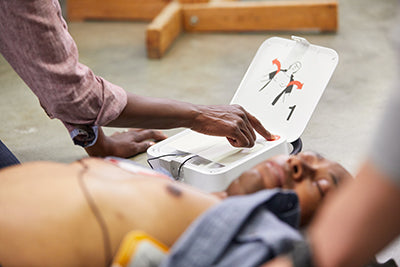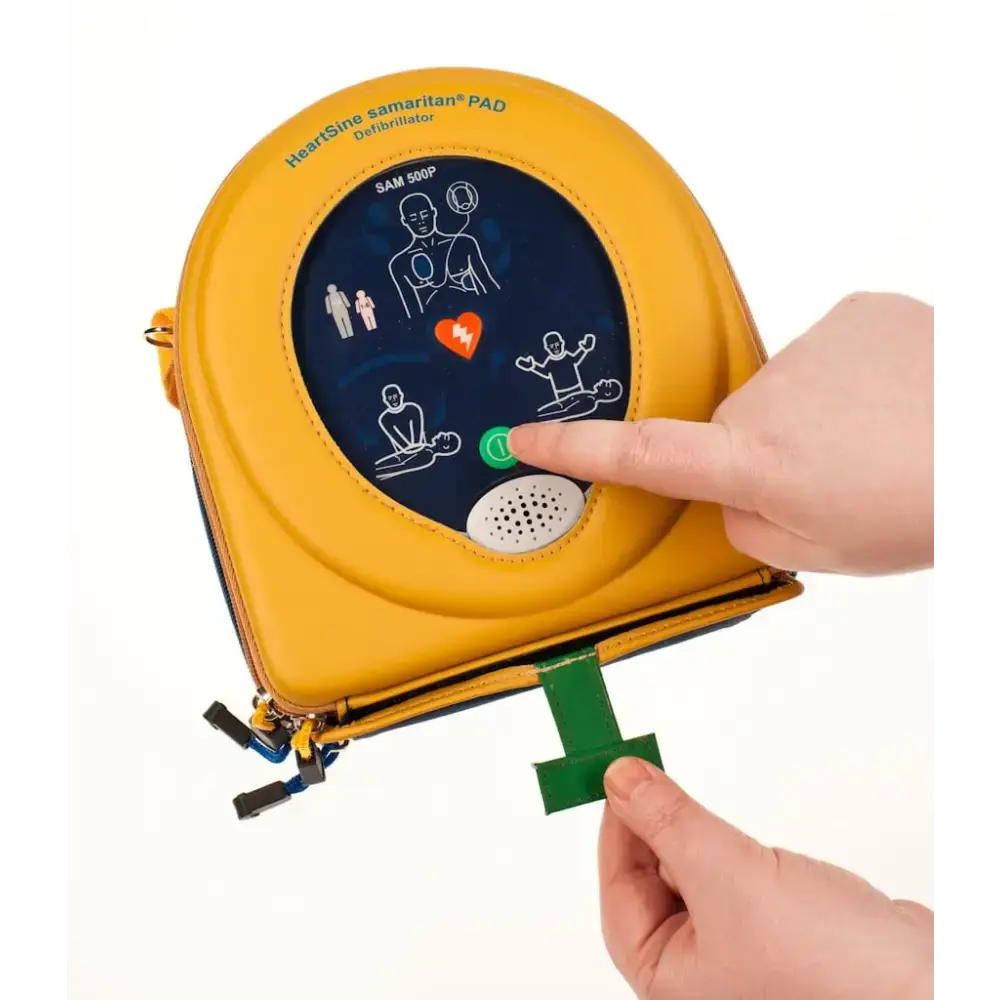AEDs are Literal Life Savers
Every year, thousands of Canadians experience cardiac arrest outside of hospital settings. In these critical moments, having access to an Automated External Defibrillator (AED) can make the difference between life and death. Yet, many people hesitate to use these devices due to unfounded fears. This article will explain why you should never be afraid to use an AED and provide essential information about these life-saving devices.

https://aed.ca/blogs/videos/aed-saves-a-mans-life-at-the-gym
What is an AED and Why You Shouldn't Fear Using One
An AED is a portable, user-friendly device designed to help someone experiencing sudden cardiac arrest. Despite their sophisticated technology, AEDs are remarkably simple to use, even for those without medical training.
Here's why you should never be afraid to use an AED:
- They're designed for untrained users: Modern AEDs provide clear voice prompts and visual instructions that guide you through each step.
- You cannot harm the victim: AEDs are smart devices that will only deliver a shock if the heart needs it. If no shock is needed, the device won't administer one.
- Legal protection exists: Good Samaritan laws in Canada protect individuals who provide emergency assistance, including using an AED.
AED vs. CPR: Understanding the Difference
While both CPR and AEDs are crucial in emergency response, they serve different purposes:
- CPR (Cardiopulmonary Resuscitation) helps maintain blood flow and oxygen to the brain and vital organs
- AED Defib use specifically addresses the heart's electrical problem that causes cardiac arrest
For the best chance of survival, both techniques should be used together. While CPR keeps blood circulating, an AED can restart a heart that has stopped beating effectively.
How to Use an AED: Simpler Than You Think
Using an AED is straightforward:
- Turn on the device
- Follow the voice prompts
- Attach the pads to the person's bare chest as shown in the diagrams
- Allow the AED to analyze the heart rhythm
- If advised, deliver a shock by pressing the button
- Continue CPR as directed by the AED
Most modern AEDs will guide you through these steps with clear instructions. The entire process is designed to be simple enough for anyone to follow, even under stress.
Finding an AED Near Me: Accessibility in Canada
AEDs are becoming increasingly available in public spaces across Canada. You can typically find them in:
- Shopping malls
- Community centers
- Sports facilities
- Schools and universities
- Airports and transportation hubs
- Office buildings
Many provinces have AED registries or apps that can help you locate the nearest device in an emergency. The increasing availability of AEDs means that help is often closer than you might think.
AED Certification: Beneficial But Not Required
While AED certification through first aid courses is valuable, it's important to know that anyone can use an AED without certification. The devices are designed for use by the general public, and no formal training is required to operate one in an emergency.
That said, taking a course that includes AED training can boost your confidence and help you respond more effectively during an emergency. Many workplaces and community centers offer these courses regularly.
AED Requirements and Regulations in Canada
Currently, AED placement is not mandated nationwide in Canada, though some provinces have specific requirements for certain facilities. However, many organizations are voluntarily installing AEDs as part of their emergency response planning.
Key considerations for AED placement include:
- High-traffic areas
- Locations where physical activity occurs
- Places with higher risk populations
- Areas where emergency medical services might take longer to reach
Portable AEDs: Life-Saving Technology on the Go

Portable AEDs have revolutionized emergency response. These compact devices can be:
- Easily transported in emergency vehicles
- Carried to remote locations
- Moved quickly to where they're needed within a facility
- Taken on trips or to sporting events
Their lightweight design and durability make them practical for a wide range of settings, from wilderness areas to office buildings.
Understanding AED Price and Cost in Canada
The cost of an AED in Canada typically ranges from $1,200 to $2,500, depending on the model and features. While this represents a significant investment, many organizations consider it essential for safety.
When evaluating AED cost, consider:
- Initial purchase price
- Maintenance requirements
- Replacement parts (pads and batteries)
- Training for staff or users
- Potential for tax incentives or grants
Many suppliers, including specialized retailers like AED.ca, offer different models to suit various needs and budgets. Some organizations may also qualify for grants or assistance programs to help offset the cost.
https://aed.ca/collections/aeds
Conclusion: Be Prepared, Not Scared

The fear of using an AED is unfounded and could cost precious time in an emergency. These devices are specifically designed to be used by anyone, regardless of training, and they cannot cause harm when used as directed.
Remember that in a cardiac emergency, taking action with an AED significantly increases the chance of survival. The device will guide you through each step, making the process as simple as possible even in a stressful situation.
By familiarizing yourself with AEDs and their use, you become part of a community prepared to save lives when every second counts. Contact AED.ca today to become ready to help save a life.






